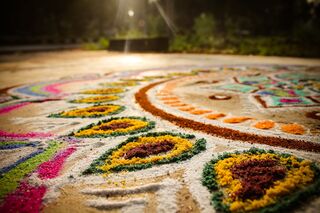Creativity
What’s Culture Got to Do With Creativity?
Culture plays a bigger role during the creative process than we might think.
Posted July 24, 2021 Reviewed by Vanessa Lancaster
Key points
- The culture in which we grew up affects cognition and planning when we create.
- Creative work includes both the 'aha moment'–discovering a new solution to a problem–and the moments of preparation leading up to it.
- Every one of us has the skill to be creative and master new challenges.

We think the way we want to think. We believe we can control our own thinking, and to an extent, we can. I can tell myself, “I will hydrate myself more today, and so I go to the kitchen and get a glass of water.” So far, so good. But how about our thinking when we are in a complex problem situation? Could we control it then? What about when we are in a completely new situation (and emotions are intense), and we cannot really rely on what we have done in the past? This is when we are or need to be creative. And this is – as we will see – when our cultural background comes into play.
Creativity means coming up with novel and useful ideas. It is often referred to as the sudden realization of a solution to a problem. Like the anecdote of the Russian Dimitri Mendeleev trying to arrange the chemical elements, and while playing card games, he suddenly had the crucial idea of how to arrange the elements in the periodic table.
But there is more to creativity. It is not just this uncontrollable intuitive, almost divine, Aha-moment. Before this specific moment, the creative person has often spent endless hours learning about a topic and solving a problem. As Thomas Edison said, “Genius is one percent inspiration and 99 percent perspiration.” Mendeleev had worked in the field of chemistry for many years. Da Vinci had studied birds, wind, and bats, made drawings, and had taken notes for several years before coming up with his flying machines. This preparation is essential as it provides the necessary mental pieces to juggle with.
So if this is a necessary skill, what are the major components of creativity? Past research has shown that our personality can influence our creativity. By putting together results of several meta-analyses, researchers have shown that, for example, openness to experience, intrinsic motivation, and positive affect are positively related to creativity (da Costa et al., 2015). Moreover, the preparation stage discussed earlier is embedded in the culture we grow up in.
For example, we also know that the social environment we work in can foster our creativity. But less is known about cultural differences in creativity and how the culture we grow up in influences our creativity. Interviews with 30 renowned artists (writers, composers, and visual artists) from Cuba, Germany, and Russia have shown, for example, that regarding the cognitive process in creating, Cuban artists generally prefer a playful way of working on art, such as working on different parts at different times (Güss et al., 2018).
German and Russian artists, on the other hand, prefer to follow a concrete plan in their creative work. Cuban and German artists generally used their emotions to guide them in pursuing, changing, stopping, or finishing their work, whereas Russians did not stress this role of emotions. German artists sometimes referred to their art to express their anger or conflicted feelings. In contrast, such motivation for their art was rarely expressed by Cuban artists and never mentioned by Russian artists.
We all face complex and new problems in life, and we all have the ability to be creative. If we are open-minded when doing ordinary things – like Mendeleev – we might end up seeing extraordinary things. Depending on our cultural background, we have different learned tools and express creativity differently. As one of our artists, when interviewed, put it: “Culture is the blood in my veins that flows into my creative work.” How aware are you of the cultural backpack you bring into the way you think and create?
References
Da Costa, S., Páez, D., Sánchez, F., Garaigordobil, M., & Gondim, S. (2015). Personal factors of creativity: A second order meta-analysis. Revista de Psicología del Trabajo y de las Organizaciones, 31(3), 165-173. https://doi.org/10.1016/j.rpto.2015.06.002
Güss, C. D., Tuason, M. T., Göltenboth, N., & Mironova, A. (2018). Creativity through the eyes of professional artists in Cuba, Germany, and Russia. Journal of Cross-Cultural Psychology, 49(2), 261–289. https://doi.org/10.1177/0022022117730817


